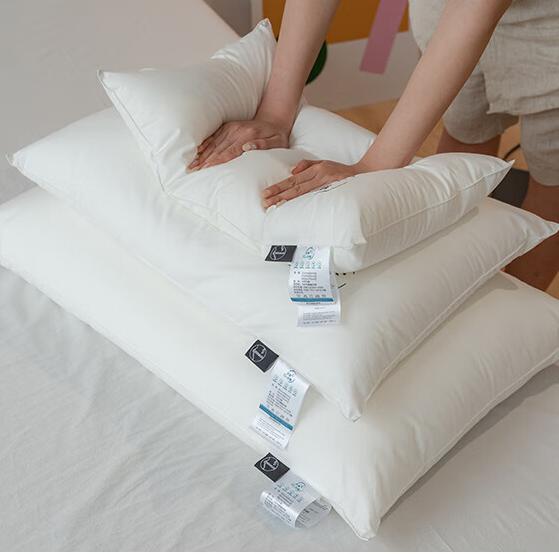Have you ever woken up in the middle of the night, feeling too hot under your thick comforter? Or spent countless hours trying to fluff up a pillow that just won’t give you the support you need? Many of us have faced these common bedding issues. But what if there was a material that could address these everyday annoyances? Let’s talk about aerogel fiber and how it’s making its way into our homes.
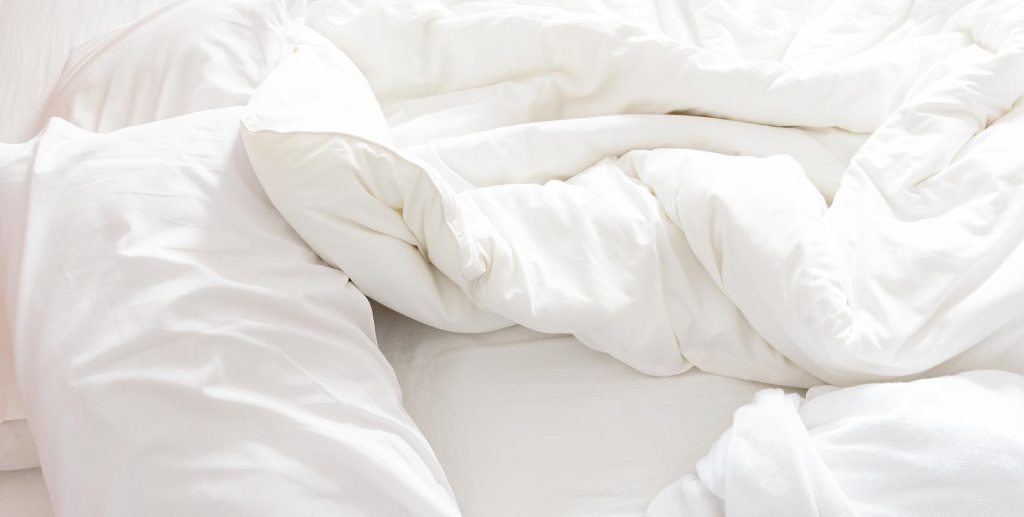
The Everyday Struggles with Home Textiles
We all know the feeling. You’re trying to get a good night’s sleep, but your bedding isn’t cooperating. Your comforter is too heavy, making you feel like you’re trapped under a weight. Your pillow, on the other hand, seems to have lost all its support, leaving you with a sore neck in the morning. These issues aren’t just minor inconveniences – they can seriously impact our sleep quality and overall well-being.
Traditional materials used in home textiles each come with their own set of problems. Feather-filled items can trigger allergies. Synthetic fills often become heavy and lose their shape over time. Natural fibers might not provide enough warmth without adding bulk. It’s a constant balancing act between comfort, insulation, and practicality.
Introducing Aerogel Fiber
This is where aerogel fiber comes into the picture. You might be wondering, “What exactly is aerogel?” It’s a fascinating material with a unique structure that gives it some impressive properties.
Aerogel was first developed back in 1931, but it wasn’t until NASA started using it for aerospace applications that its potential really became clear. Now, this space-age material is finding its way into our bedrooms and living rooms, offering some exciting possibilities for home textiles.

What Makes Aerogel Fiber Special?
Aerogel has earned the nickname “frozen smoke” because of its unique appearance and properties. It’s a material that’s mostly air – in fact, it’s 90-99% air! This gives it some remarkable characteristics:
- Thermal Insulation: Aerogel fiber can keep you warm without adding bulk. Its thermal conductivity is even lower than still air, which means it’s incredibly effective at trapping heat.
- Lightweight: Aerogel is one of the lightest solid materials known. When used in fibers, it creates remarkably light textiles.
- Breathable: Despite its excellent insulation properties, aerogel fiber allows air to circulate. This means you stay warm without getting sweaty.
- Moisture-Wicking: Aerogel fiber absorbs moisture and allows it to evaporate quickly. This helps keep you dry and comfortable.
- Odor-Resistant: The structure of aerogel fiber makes it naturally resistant to odors, helping your bedding stay fresh for longer.
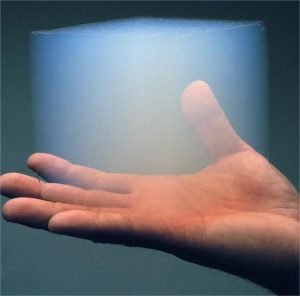

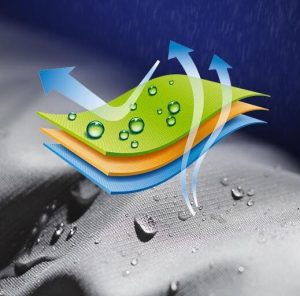
How Aerogel Paddings Can Improve Your Home Textiles
Now that we know what aerogel paddings can do, let’s look at how it might change the home textiles we use every day:
Comforters and Duvets
Imagine a comforter that keeps you perfectly warm without weighing you down. Aerogel-filled comforters can do just that. They provide excellent insulation while being much lighter than traditional options. You could have a warm, cozy bed without feeling like you’re being squashed by your bedding.
Pillows
We all want that perfect pillow – one that’s soft yet supportive and stays cool throughout the night. Aerogel-filled pillows could be the answer. They can provide the support you need while being light and breathable. And because aerogel is so good at insulation, you might finally have a pillow that stays cool all night long.
Mattress Toppers
An aerogel-filled mattress topper could add an extra layer of comfort to your bed without making it too high. The excellent insulation properties mean you’d stay warm (or cool) without changing the feel of your mattress too much.
Throws and Blankets
Lightweight, warm, and soft – these are the qualities we all want in a throw blanket. Aerogel-filled throws could provide all of these. They’d be perfect for curling up on the couch, and easy to store when not in use.
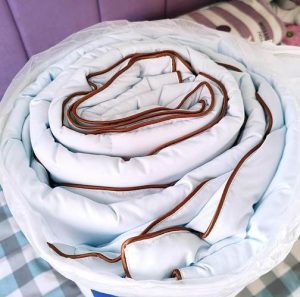
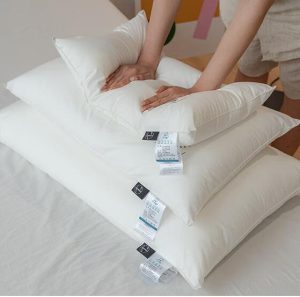
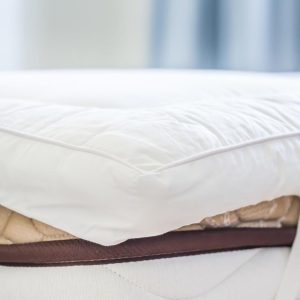
The Advantages of Aerogel fiber in Home Textiles
By bringing aerogel fiber into our home textiles, we could see some real benefits:
- Better Sleep: With bedding that regulates temperature more effectively, you might find yourself sleeping more comfortably.
- Energy Savings: More effective insulation in your home textiles could help reduce your heating and cooling costs.
- Allergy-Friendly: For those with allergies, aerogel fiber could be a great option as it’s naturally hypoallergenic.
- Easy Care: Despite its high-tech origins, many aerogel-filled textiles can be machine-washed, making them easy to care for.
- Long-Lasting: Aerogel fiber is durable, meaning your home textiles could maintain their properties for longer.
- Space-Saving: Because aerogel is so effective at insulation, you might need less bulky bedding, freeing up storage space in your home.
Looking to the Future
As aerogel fiber technology continues to develop, we’re likely to see it in more and more home products. It’s an exciting time for home textiles, with the potential for significant improvements in comfort and functionality.
Imagine a bedroom where your bedding is light as a feather but keeps you perfectly warm. And a living room where your throw blankets are incredibly light yet keep you cozy on the coldest days.
The introduction of aerogel fiber into home textiles opens up new possibilities for comfort and functionality in our living spaces. It encourages us to think differently about what we expect from our bedding, curtains, and other home fabrics.
The world of home textiles is evolving, bringing us products that are lighter, warmer, and more comfortable than ever before. Are you curious to see how aerogel fiber could improve your home comfort?

